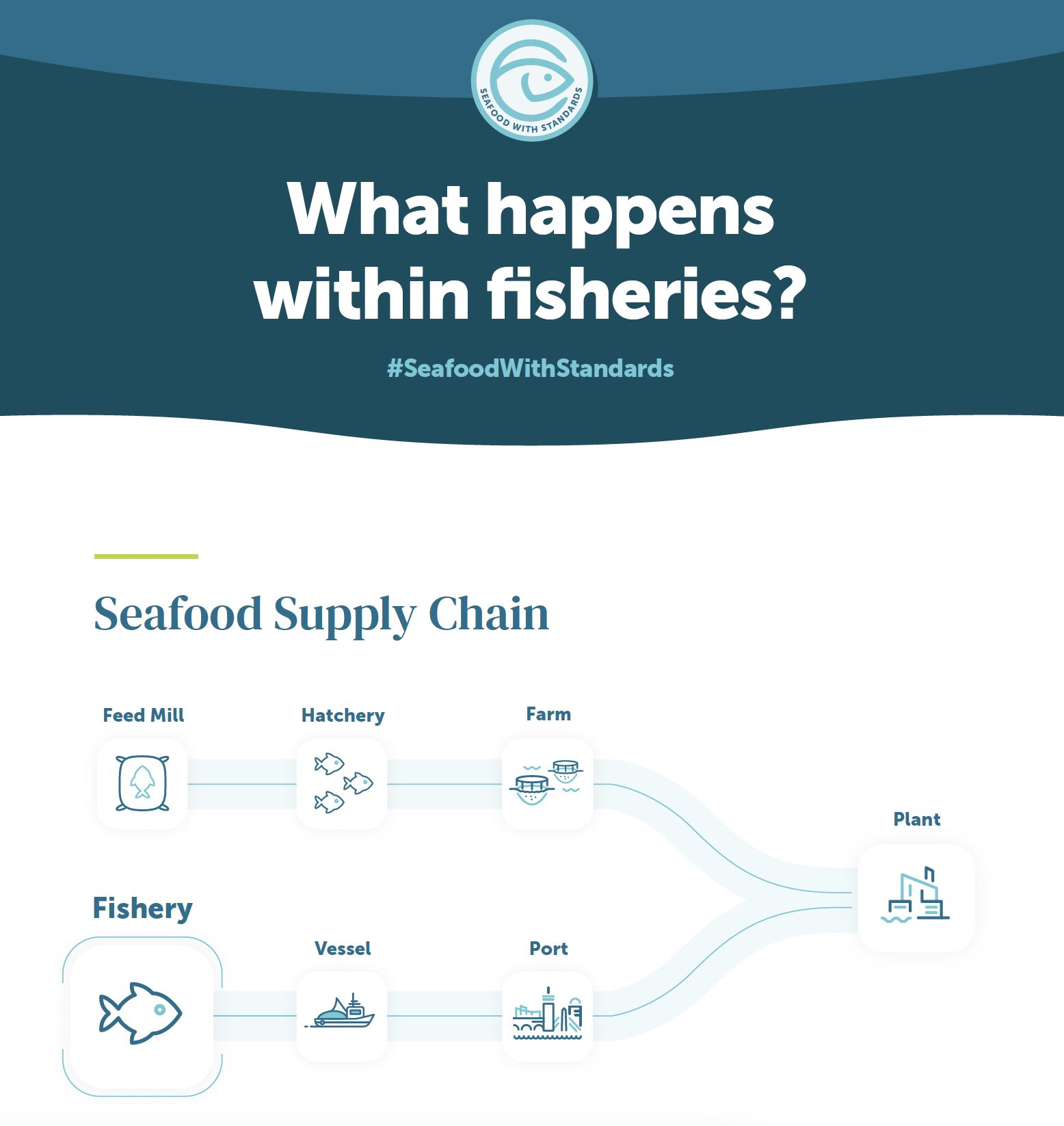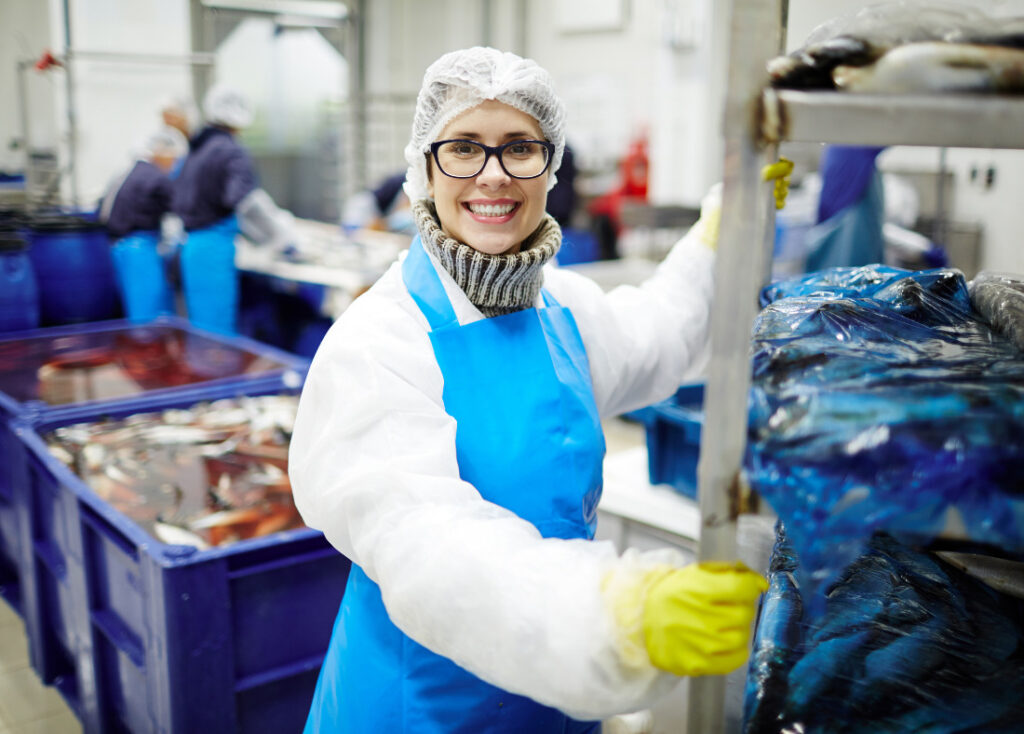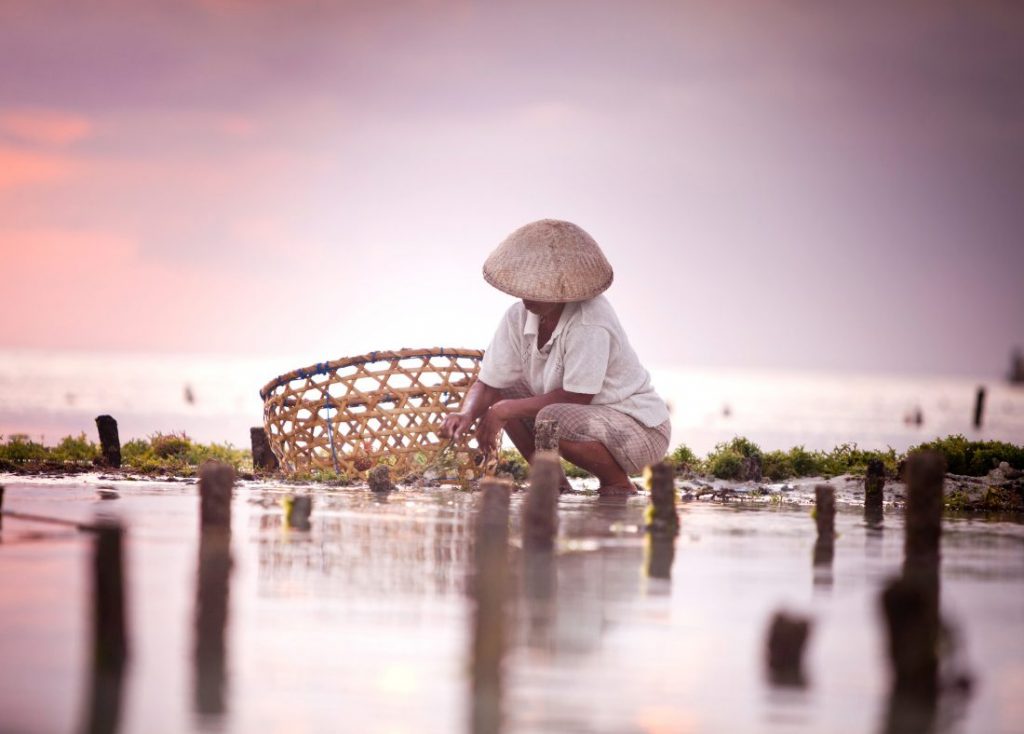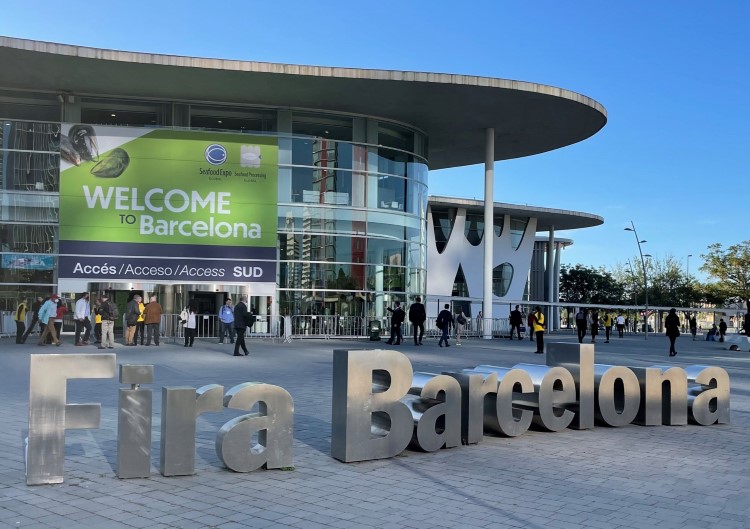A closer look at what happens within fisheries
 Note: Each step in the seafood production chain has its own importance, but they work together to create the best quality products for consumers. In the #SeafoodWithStandards campaign throughout 2022, we will be highlighting each stop along the production chain to pull back the curtain and explain what happens there. The next stop we’re focusing on is fisheries, which then leads into vessels, ports and processing plants.
Note: Each step in the seafood production chain has its own importance, but they work together to create the best quality products for consumers. In the #SeafoodWithStandards campaign throughout 2022, we will be highlighting each stop along the production chain to pull back the curtain and explain what happens there. The next stop we’re focusing on is fisheries, which then leads into vessels, ports and processing plants.
What is a fishery?
A fishery is a habitat in which fish are hunted and caught. Because of their economic, social and environmental importance, fisheries are governed by complex fisheries management practices and legal regimes that vary widely from country to country.
What happens within fisheries?
The Sustainable Fisheries initiative by the University of Washington says it well: The way that a fish is caught is essential in understanding its sustainability.
Our oceans support a diverse range of fisheries, which are essential to delivering almost half of the global supply of seafood protein (the other half is from aquaculture). The range of species caught through fishing is vast – from lobster to tuna, and salmon to sea urchins.
To learn about what happens within fisheries, it’s easiest to approach it through different commercial fishing methods and gear types.
The most predominant methods of commercial fishing are:
 Fishing with nets: More than 80% of fish are caught via net fishing. There are a variety of different types of net fishing, including trawling, gillnets and purse seining schools of fish.
Fishing with nets: More than 80% of fish are caught via net fishing. There are a variety of different types of net fishing, including trawling, gillnets and purse seining schools of fish.- Fishing with lines: Line fishing is the image that most people think of when they think of fishing, but there are other options than just a pole and line, like longlines.
- Dredging and trapping: Dredging and trapping are often used to harvest shellfish and bivalves growing in the wild, including species like mussels and lobster.
- Diving: More artisanal fisheries use diving as the method of harvesting, particularly for species like sea urchin, sea cucumber and geoduck.
Across all of these methods to fishing, there are some general steps of production that are common to each of them:
- Generally, fisherpeople will go out on a vessel of some sort. Vessels can be as small as one-person boats or as large as commercial trawlers that contain processing machinery onboard.
- Depending on which species is being fished and which method the fisherpeople are using, fishing gear is used to capture the species they seek, whether through catching with nets, lines, dredging or trapping.
- The catch is then counted and stored before being brought to the next stop in the supply chain, the processing plant, or is processed onboard the vessel.
Fishery certifications

The Global Seafood Alliance is the standards holder for both Best Seafood Practices (BSP) and Best Aquaculture Practices (BAP). In 2021, the organization rebranded with the transition into the wild-caught fisheries space. The Responsible Fishing Vessel Standard (RFVS) and the Seafood Processing Standard (SPS) are part of the wild-caught program under BSP. These standards exist to provide assurances in the wild seafood supply chain beyond the environmental responsibility pillar, which other certification schemes address.
As there are existing certification programs that certify fisheries as responsible, GSA is not seeking to “reinvent the wheel” by creating a fishery standard for the BSP program. Instead of doing this, in order for wild-caught seafood production to become BSP certified, the fishery stop in the supply chain must be benchmarked by the Global Sustainable Seafood Initiative (GSSI) through another certification program. Our mission with BSP is to simplify fisheries certification, and to create accountable standards for other stops along the supply chain that did not have certification standards previously.
View the full What happens within fisheries? infographic.





